Here, 2,000 varieties of Coco Chanel’s favorite bloom are studied and nurtured for the future.
READ ALSO: Island Therapy: Balance Your Chakras, Find Solace, And Experience Sound Healing At This Boracay Spa
Drawing inspiration from nature cannot be improvised. For several years, Chanel has been cultivating, observing and experimenting in its open-sky laboratories located in various climatic zones around the globe.
Considered the cradles of the brand’s skincare, they are the result of an exemplary approach, on an environmental and territorial scale, that values the terroirs through a virtuous agro-ecological approach, combining traditional farming practices and scientific innovation.
Garden of plenty
Since 1998, in the South-West of France, between the green hills of Béarn and Adour, in the heart of the village of Gaujacq, Chanel has been leading a project of an exceptional scale around the camellia, the emblematic flower of Mademoiselle Chanel.
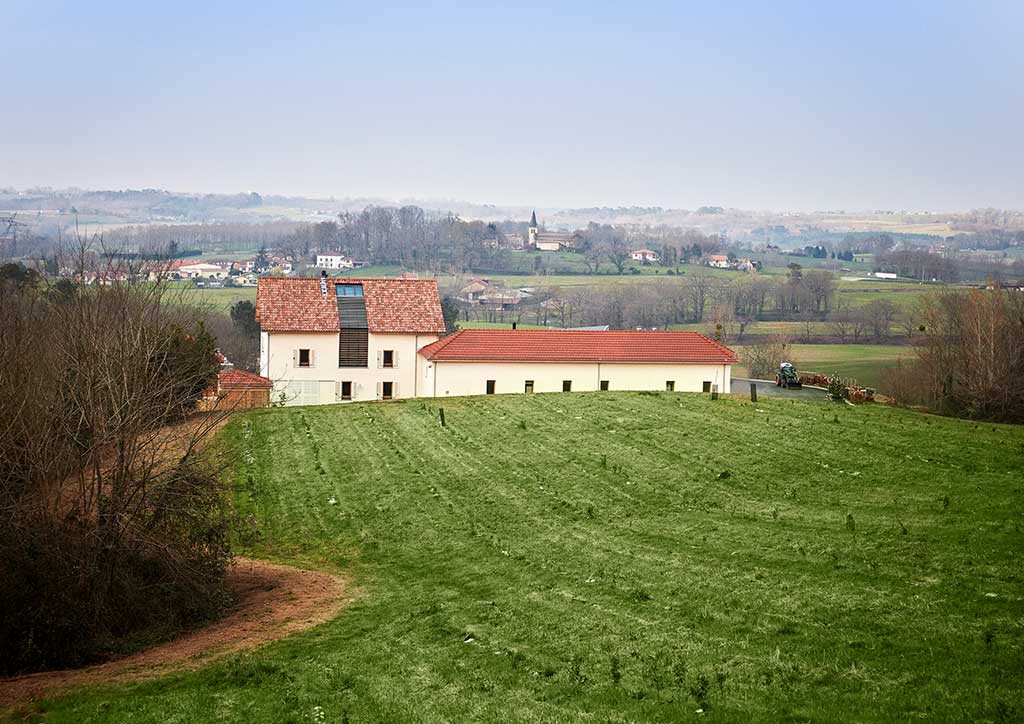
It was initiated in collaboration with international Camellia expert Jean Thoby, who has been cultivating a unique botanical conservatory garden for several decades.
Dedicated to plant conservation, the garden shelters 2,000 varieties of camellias, gleaned throughout the world, including two seedlings from the mother plants that were supposedly ordered by Gabrielle Chanel more than a century ago.
They were the starting point for the establishment of the Chanel crops, at the Camellia Farm located a few kilometers from this exceptional place. The plant conservatory also houses the rarest horticultural species and varieties, on nearly five hectares, and includes no fewer than 3,000 plants gathered over time around the world by Thoby’s family, who has been botanizing for five generations.
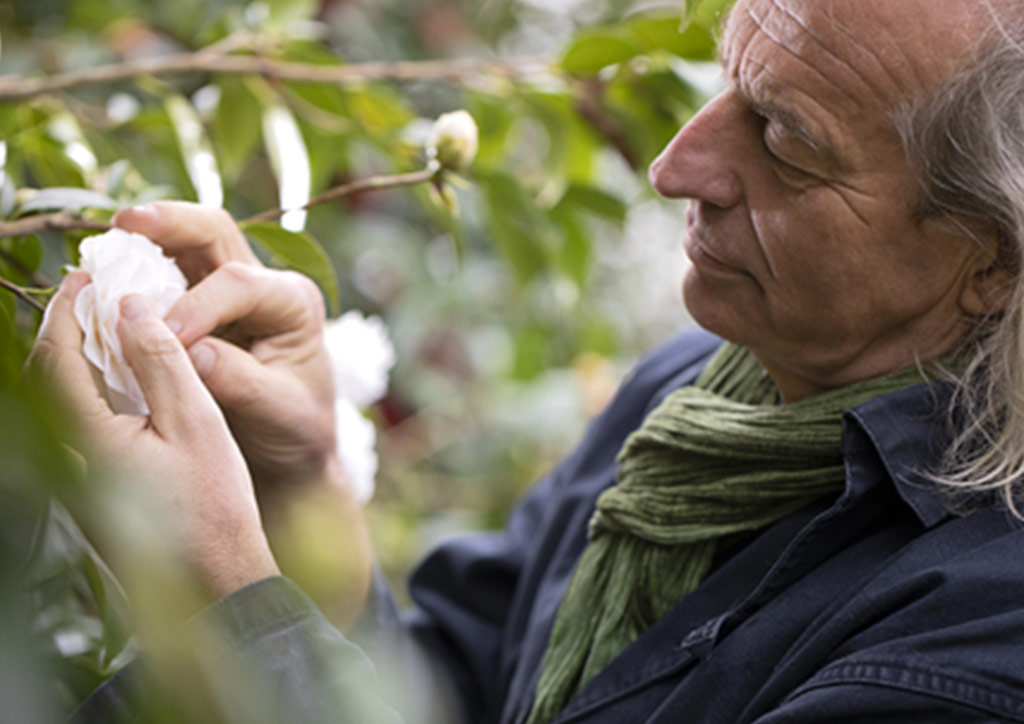
This part of southwestern France is ideal for welcoming and cultivating the camellia, which arrived from Asia by the Tea Road in the 17th century; particularly thanks to its very balanced summer and winter temperatures similar to those of China and Japan, the countries of origin of camellia.
“The climate of Gaujacq is known for its rainfall spread over the four seasons. The winds are almost non-existent, the land is deep, and the springs are abundant,” Thoby explains.
Abundant land
As Chanel’s crop operations manager stationed in Gaujacq, Philippe Grandry agrees. He is responsible for managing the production of camellias as well as other plants that are of use to the brand’s research and development.
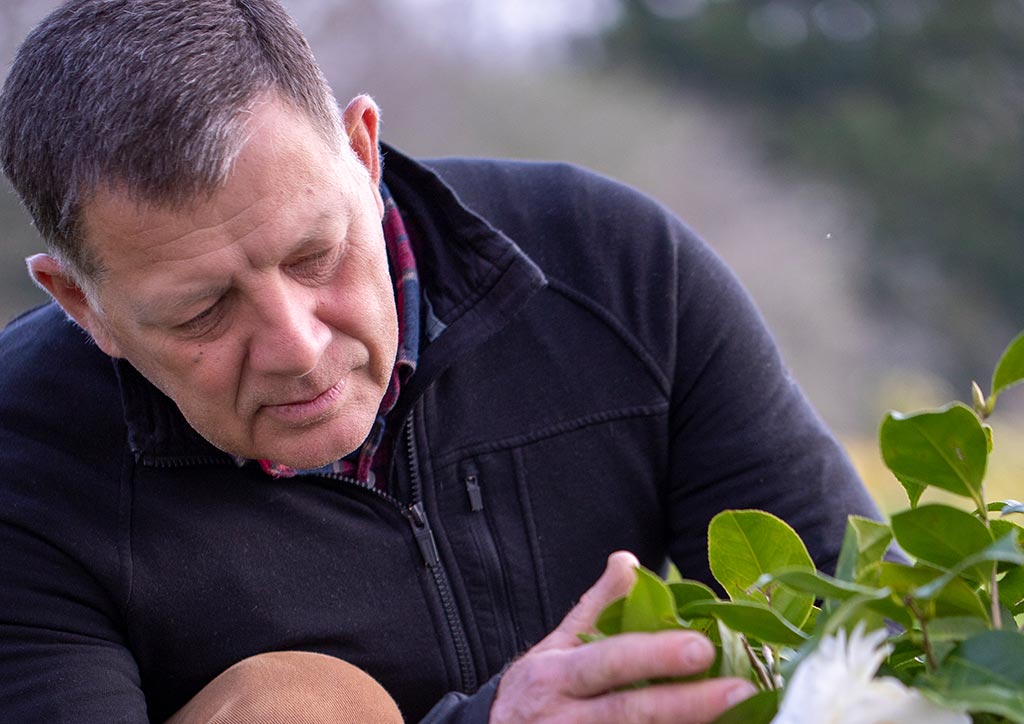
“The camellia is a tree that teaches us about perseverance,” says Gandry, who has a significant amount of experience in agroecology and agroforestry behind him. “We cultivate it according to innovative and demanding agricultural practices, while continuing to respect biodiversity.”
Passionate about the challenge of cultivating this plant as a crop, which has never been done in Europe, much less using organic methods, his exemplary approach is one in which he firmly believes.
“We are in a true open-sky research laboratory, and experimentation is central to our approach,” Grandry adds. “We work to ensure that our production methods preserve local ecosystems, maintain biological equilibrium and contribute to biodiversity conservation.”
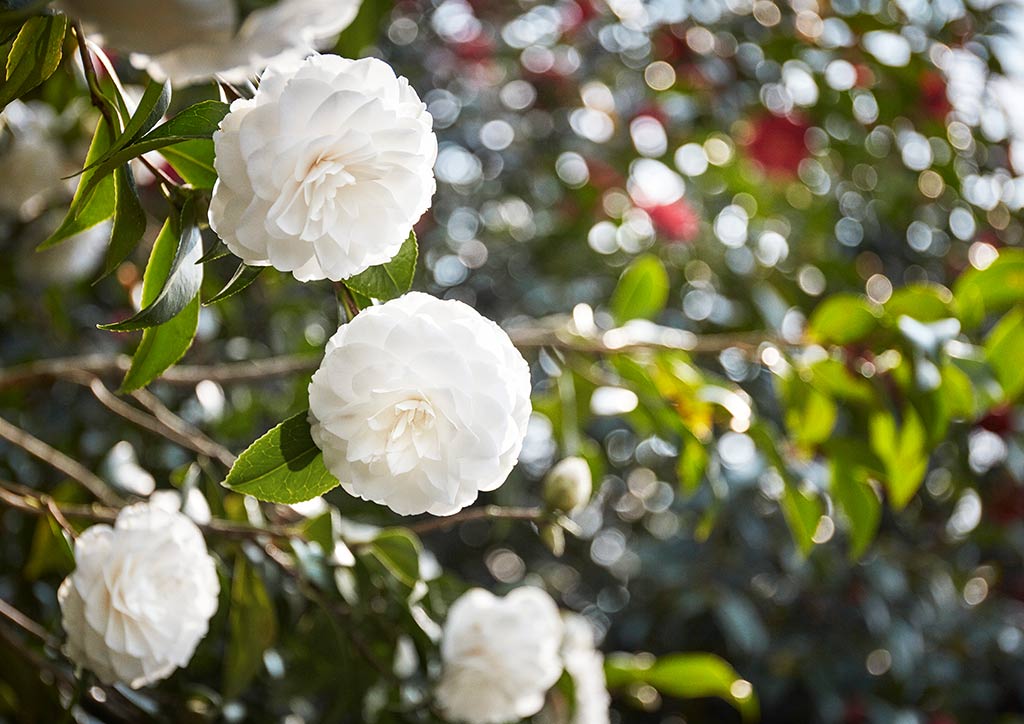
The camellia plants are grown in open ground using strict agricultural practices that uphold the highest standards of environmental responsibility.
“The agroecological approach has led us to not only use safe, natural products and ban the use of pesticides, herbicides and chemical fertilizers, but also to consider the plant as part of its ecosystem,” Grandry continues.
Unique perspective
Before Chanel Research began experimenting in 2005, Camellia japonica ‘Alba Plena’ had never been used in cosmetics. By studying this remarkable flower’s resistance to winter frosts, scientists revealed its exceptional moisturizing properties.
Researcher and phytochemist Nicola Fuzzati is cosmetic ingredients innovation and development Director at Chanel Research. By combining the best of plants with technology, his teams develop unique, pure and efficient active ingredients.
In addition to development, the teams are also responsible for production, thereby ensuring that each stage is perfectly integrated, mastered and monitored. “Our increased presence on the ground and our scientific expertise give us a unique perspective on nature’s potential to serve beauty,” Fuzzati says.
The Phytoanalysis laboratory, set up in Gaujacq among the camellia fields, enables him to work alongside the plants, observing them in their natural environment, where he can study and analyse them to extract their quintessence.
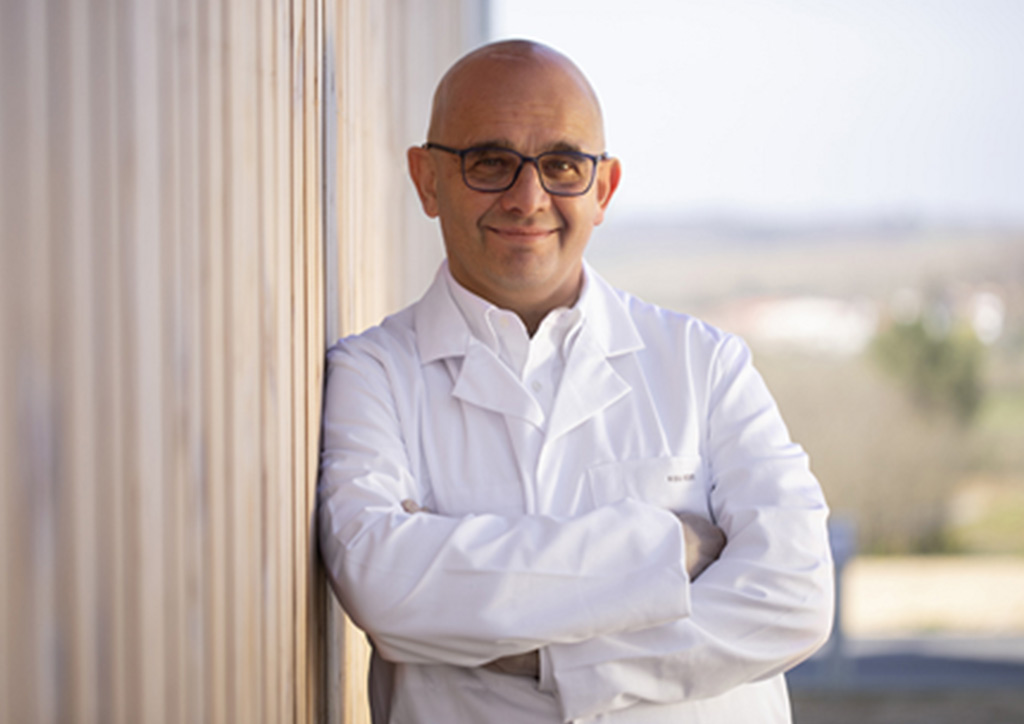
“We are opening a new, still rare form of dialogue between scientists and growers,” says Thoby of all these efforts.
And, of course, further research leads to product innovation. Through this work, the creation of exclusive active ingredients with remarkable hydrating properties have been incorporated into Chanel’s Hydra Beauty skincare products.
The camellia plant belongs to the family Theaceae, but the expert also considers it a part of his own, for whom the flowers have been a passion for generations.
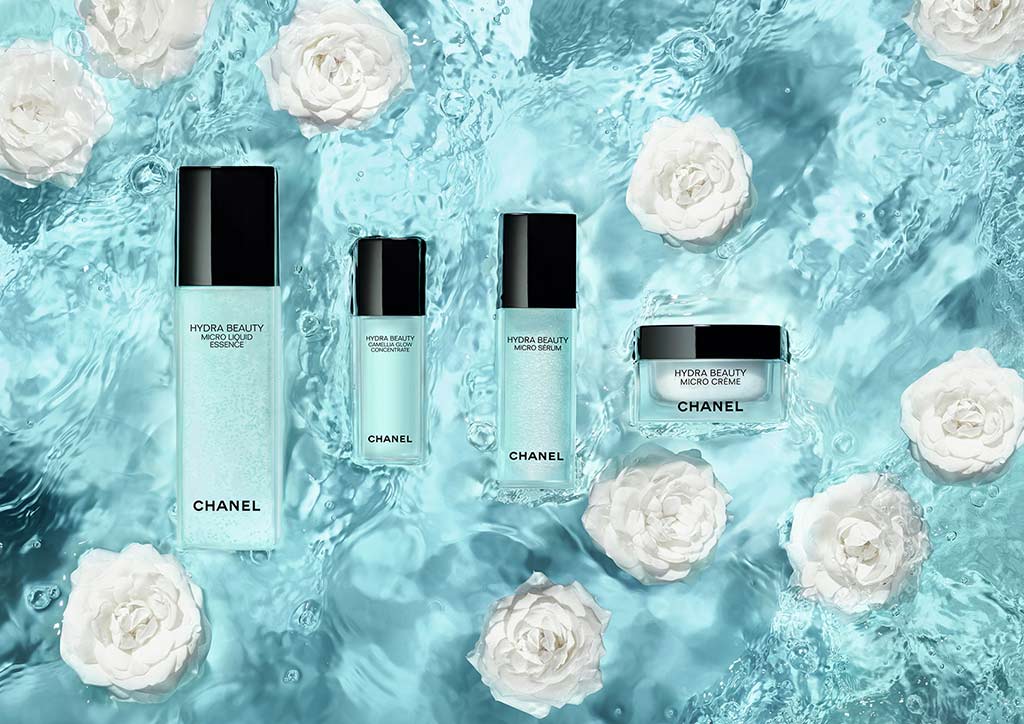
Camellia japonica ‘Alba Plena’, now grown in Gaujacq, has been in the ancestral collection’s catalog since 1864, but it was not until 1998 that the Chanel Research team began experimentation on two plants from its impressive conservatory garden.
Planting for the future
“We had no idea that the Camellia japonica ‘Alba Plena’, threatened with extinction and difficult to propagate, could be so interesting,” explains Thoby. The initiative contributes to the preservation of biodiversity, which is as beautiful as it is fragile.
When Chanel revealed the potential of Camellia japonica ‘Alba Plena’ for cosmetics, Thoby took on the responsibility of upscaling its cultivation in partnership with the House.
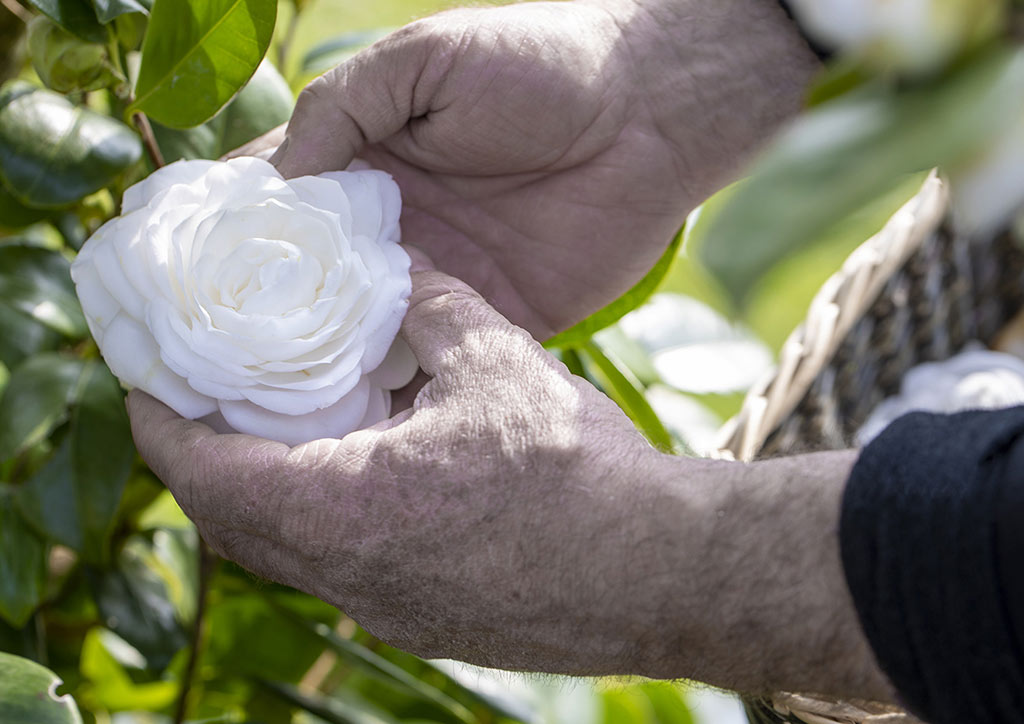
Thoby works to preserve camellias and researches new species and varieties from around the world. He has traveled to five different continents to meet the remarkable flower’s most eminent enthusiasts, which has helped him develop a more precise approach to camellia cultivation.
“The Gaujacq conservatory garden participates in the conservation of plant diversity, both with its unique collection of camellias and with the work it does to select and introduce new species. We have been able to save 75 species of camellias,” he says.





